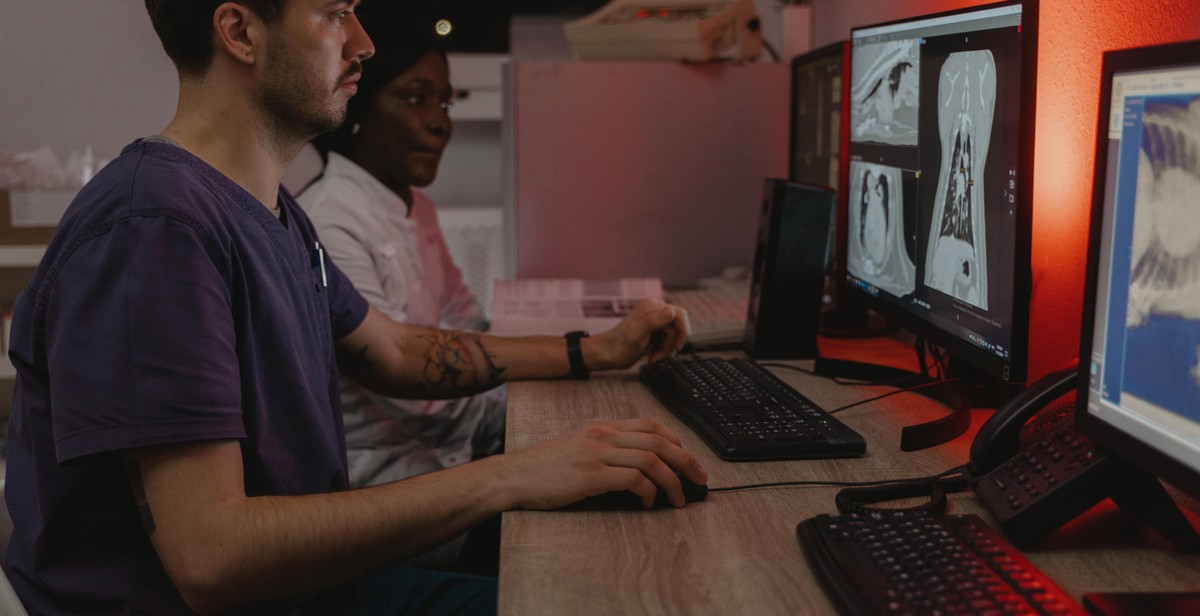How to Promote Patient Education in a Hospital Setting
Patient education is an essential aspect of healthcare that empowers patients to take control of their health and well-being. When patients understand their medical conditions, treatment options, and how to manage their health, they are more likely to comply with their treatment plan and achieve better outcomes.
However, promoting patient education in a hospital setting can be challenging. Patients are often overwhelmed and anxious, and healthcare providers are busy attending to their medical needs. Moreover, patients come from diverse backgrounds and have varying levels of health literacy, making it difficult to create a one-size-fits-all approach to patient education.
Despite these challenges, there are effective strategies that hospitals can use to promote patient education. In this article, we will explore some of the best practices for promoting patient education in a hospital setting. We will discuss the importance of patient-centered care, the role of technology in patient education, and the benefits of interdisciplinary collaboration.
Why is Patient Education Important?
Patient education is crucial for several reasons. Firstly, it helps patients understand their medical condition, treatment options, and how to manage their health. This knowledge empowers patients to take an active role in their healthcare and make informed decisions about their treatment plan. Secondly, patient education improves patient outcomes by increasing compliance with treatment plans and reducing the risk of complications. Lastly, patient education can reduce healthcare costs by preventing hospital readmissions and unnecessary medical procedures.
Challenges of Promoting Patient Education in a Hospital Setting
There are several challenges to promoting patient education in a hospital setting. Some of these challenges include:
- Limited time and resources
- Diverse patient populations
- Patient anxiety and fear
- Low health literacy
Overcoming these challenges requires a patient-centered approach to care that addresses the unique needs of each patient.

Why is Patient Education Important?
Patient education is an essential component of healthcare delivery. It involves providing patients with information about their health conditions, treatment options, and self-management strategies. Patient education is critical in empowering patients to take an active role in their healthcare and achieve better health outcomes. Here are some reasons why patient education is important:
Improved Health Outcomes
Patient education can lead to improved health outcomes by helping patients better understand their health conditions, treatment options, and self-management strategies. When patients have a better understanding of their health conditions, they are more likely to comply with their treatment plans, adhere to their medication regimen, and make healthier lifestyle choices. This can result in improved clinical outcomes, such as reduced hospital readmissions and complications.
Increased Patient Satisfaction
Patient education can also lead to increased patient satisfaction. When patients are well-informed about their health conditions and treatment options, they are more likely to feel confident in their healthcare providers and the care they receive. This can result in higher patient satisfaction scores and better patient-provider relationships.
Reduced Healthcare Costs
Patient education can also lead to reduced healthcare costs. When patients have a better understanding of their health conditions and treatment options, they are less likely to require costly hospital readmissions or emergency department visits. Additionally, patient education can help patients make healthier lifestyle choices, which can lead to a reduction in chronic disease management costs over time.
In summary, patient education is a critical component of healthcare delivery that can lead to improved health outcomes, increased patient satisfaction, and reduced healthcare costs.

Barriers to Patient Education in a Hospital Setting
Patient education is a critical component of healthcare, as it empowers patients to take an active role in their own health and well-being. However, there are several barriers that can hinder effective patient education in a hospital setting. These barriers include:
Time Constraints
Hospital staff are often overworked and have limited time to spend with each patient. This can make it difficult to provide comprehensive patient education, as healthcare providers may feel rushed or unable to devote the necessary time to fully educate patients on their conditions and treatment options.
Limited Resources
Hospitals may not have the resources necessary to provide effective patient education, such as educational materials or specialized staff members. This can make it challenging to provide patients with the information they need to make informed decisions about their health.
Language and Cultural Differences
Patient education materials and healthcare providers may not be able to effectively communicate with patients who speak a different language or come from a different cultural background. This can lead to misunderstandings and a lack of understanding about the patient’s condition and treatment options.
Low Health Literacy
Many patients have low health literacy, which means they may have difficulty understanding medical terminology and health information. This can make it challenging to provide effective patient education, as healthcare providers may need to simplify information and use layman’s terms to ensure patients fully understand their condition and treatment options.
| Barrier | Description |
|---|---|
| Time Constraints | Hospital staff are often overworked and have limited time to spend with each patient. |
| Limited Resources | Hospitals may not have the resources necessary to provide effective patient education. |
| Language and Cultural Differences | Patient education materials and healthcare providers may not be able to effectively communicate with patients who speak a different language or come from a different cultural background. |
| Low Health Literacy | Many patients have low health literacy, which means they may have difficulty understanding medical terminology and health information. |

Strategies for Promoting Patient Education in a Hospital Setting
Utilize Technology
Technology has become an essential tool in promoting patient education in a hospital setting. Hospitals can use various technology platforms such as interactive videos, mobile applications, and web-based learning modules to educate patients. These technologies are beneficial because they can be accessed by patients at their convenience, and they provide a more engaging and interactive experience for patients.
Collaborate with Interdisciplinary Teams
Patient education is a team effort that requires collaboration between healthcare providers. Hospitals can promote patient education by forming interdisciplinary teams that include physicians, nurses, dietitians, and other healthcare professionals. These teams can work together to develop educational materials, provide patient education, and monitor patient progress.
Provide Written Materials in Multiple Languages
Patients come from diverse backgrounds, and hospitals must ensure that they provide educational materials in multiple languages. This strategy is crucial in promoting patient education because it ensures that patients understand the information provided to them. Hospitals can work with professional translators or use translation software to translate educational materials into different languages.
Train Staff on Health Literacy
Health literacy is the ability of patients to understand and use health information to make informed decisions about their health. Hospitals can promote patient education by training their staff on health literacy. This training will equip staff with the skills to communicate effectively with patients, use plain language, and provide patient education that is easy to understand.
| Strategy | Description |
|---|---|
| Utilize Technology | Use interactive videos, mobile applications, and web-based learning modules to educate patients. |
| Collaborate with Interdisciplinary Teams | Form interdisciplinary teams to develop educational materials, provide patient education, and monitor patient progress. |
| Provide Written Materials in Multiple Languages | Translate educational materials into different languages to ensure patients understand the information provided to them. |
| Train Staff on Health Literacy | Equip staff with the skills to communicate effectively with patients, use plain language, and provide patient education that is easy to understand. |

Best Practices for Patient Education in a Hospital Setting
Effective patient education is a critical component of quality healthcare. It helps patients understand their medical conditions, treatment options, and how to manage their health. Here are some best practices to promote patient education in a hospital setting:
Assess Patient Learning Needs
Before providing patient education, it’s essential to assess the patient’s learning needs. This can be done through conversations with the patient, reviewing medical records, and using standardized assessments. By understanding the patient’s level of health literacy and learning style, healthcare providers can tailor education to meet their specific needs.
Use Teach-Back Method
The teach-back method is an effective way to confirm patient understanding. It involves asking patients to explain, in their own words, what they have learned. This method helps identify areas where patients may need additional education and ensures that they have the information they need to manage their health effectively.
Provide Visual Aids and Interactive Tools
Visual aids and interactive tools can help patients understand complex medical concepts and treatment options. These can include diagrams, videos, and interactive models. Providing patients with access to these tools can help them engage with their healthcare and feel more confident in managing their health.
Encourage Family and Caregiver Involvement
Family members and caregivers play a critical role in patient education. They can provide emotional support and help patients navigate the healthcare system. Encouraging their involvement in patient education can help ensure that patients receive the support they need to manage their health effectively.
In conclusion, by following these best practices for patient education, healthcare providers can promote better health outcomes and empower patients to take an active role in managing their health.

Conclusion
Patient education is a crucial aspect of healthcare delivery that can help patients and their families better understand their health conditions, treatment options, and ways to manage their health. In a hospital setting, promoting patient education is essential to achieving positive health outcomes and improving patient satisfaction.
Healthcare providers can promote patient education by using various strategies, such as creating educational materials, using technology, involving family members, and partnering with community organizations. These strategies can help healthcare providers to provide patients with the right information, at the right time, and in the right format, thus empowering them to take control of their health and make informed decisions.
Additionally, healthcare providers can evaluate the effectiveness of their patient education programs by measuring patient outcomes, such as patient satisfaction, adherence to treatment plans, and health outcomes. This can help them to identify areas that need improvement and make necessary changes to their patient education programs.
In conclusion, promoting patient education in a hospital setting is a continuous process that requires commitment, collaboration, and innovation. By using effective strategies and evaluating the outcomes, healthcare providers can improve patient education and ultimately, patient outcomes.
